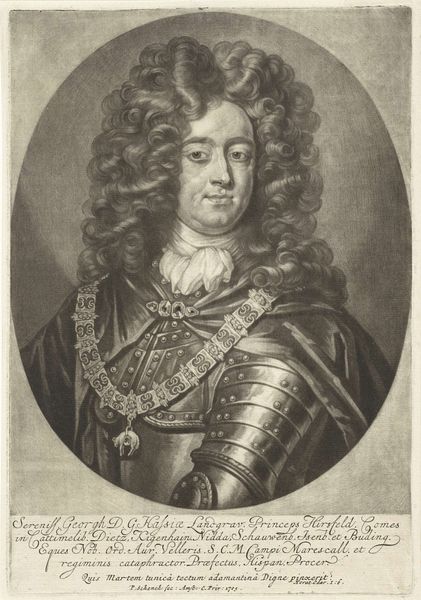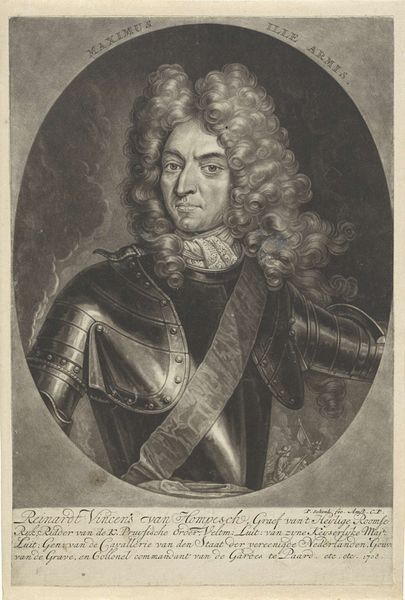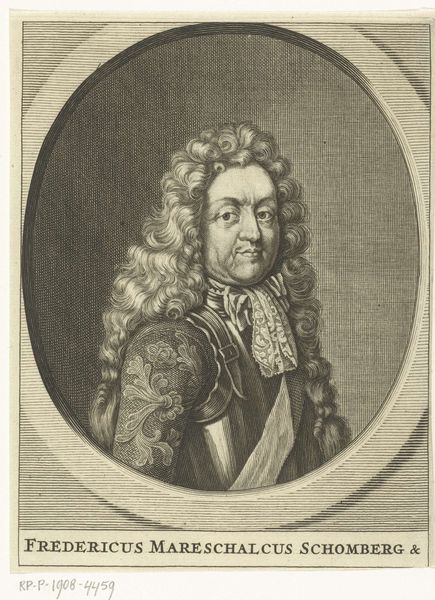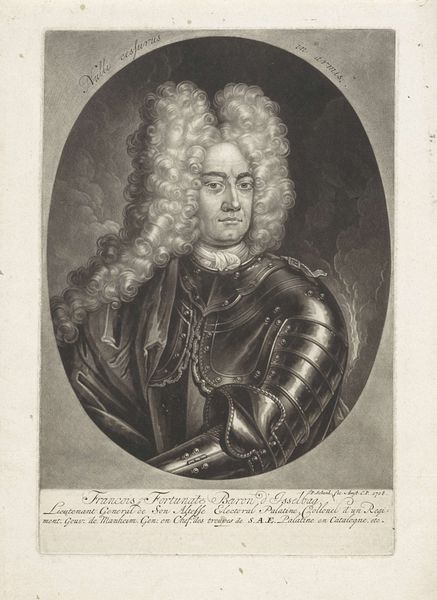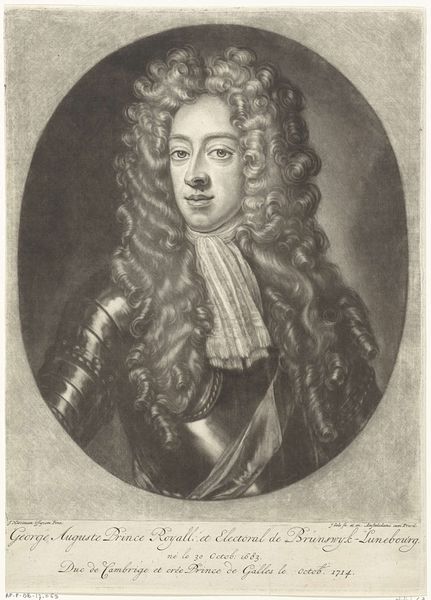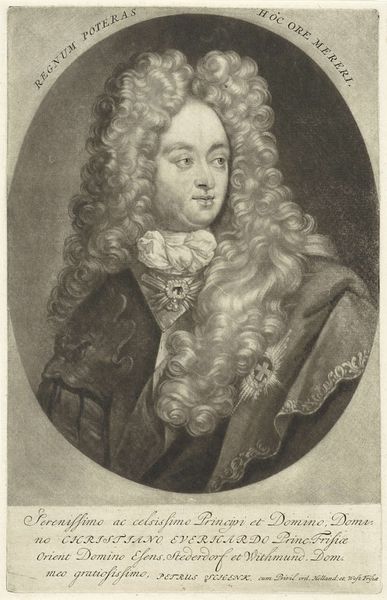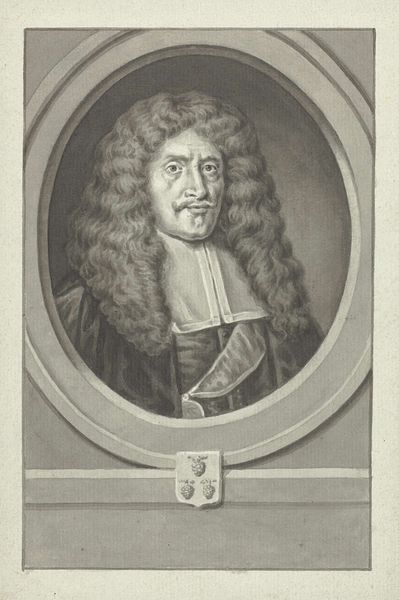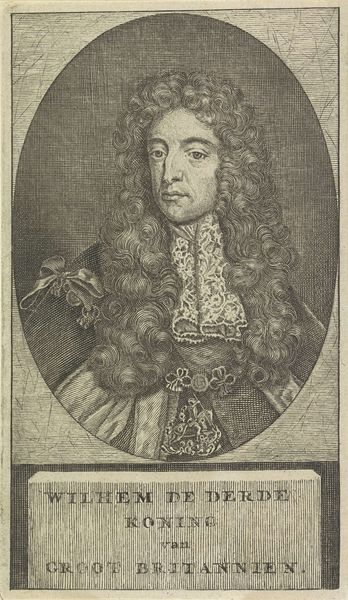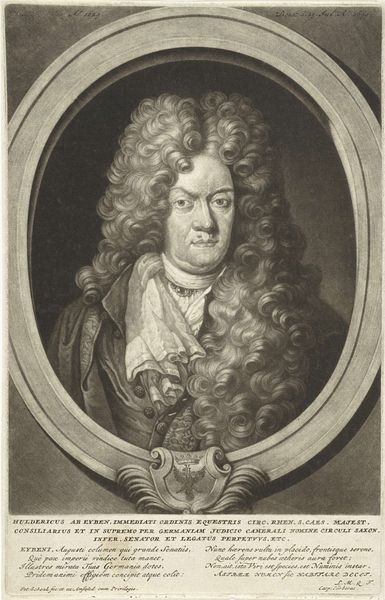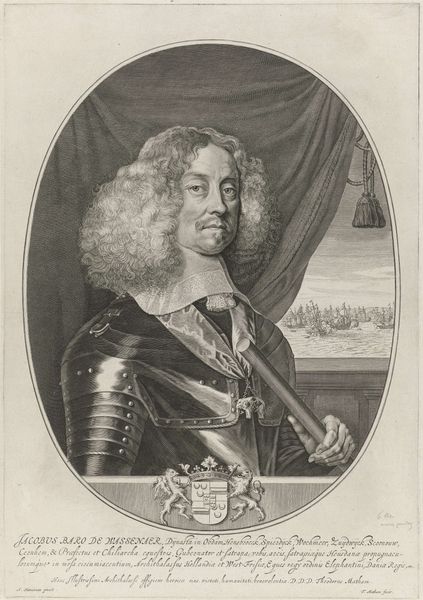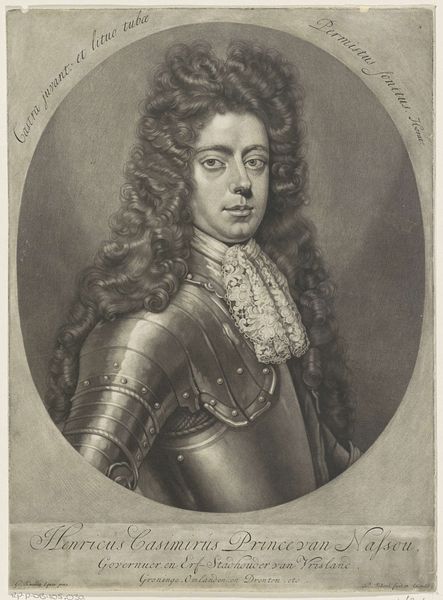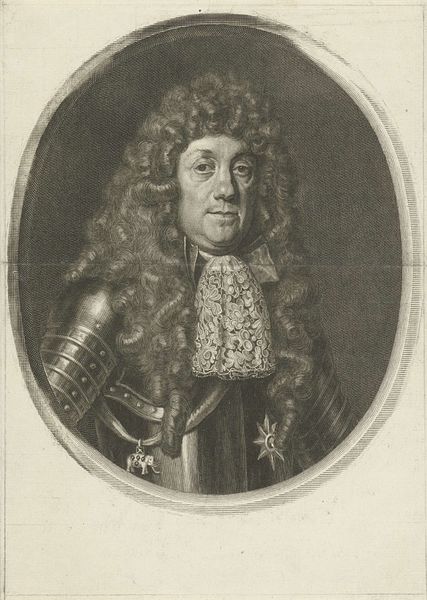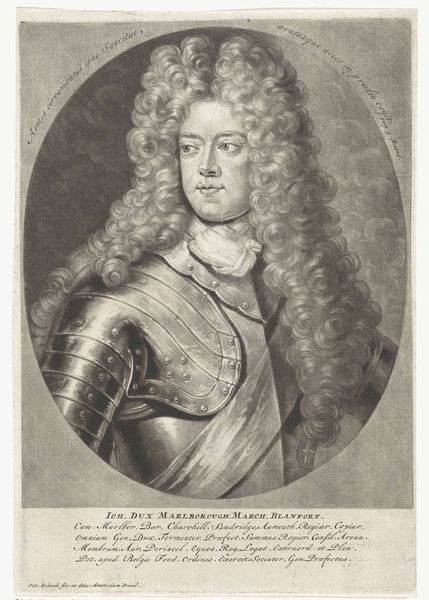
engraving
#
portrait
#
baroque
#
old engraving style
#
portrait reference
#
portrait drawing
#
history-painting
#
engraving
Dimensions: height 273 mm, width 187 mm
Copyright: Rijks Museum: Open Domain
Editor: Here we have Pieter Schenk's "Portret van Daniël Wolff van Dopff," an engraving from 1703. What strikes me immediately is the contrast between the detailed armour and the soft curls of his wig. What do you make of it? Curator: The image compels us to consider its intrinsic design elements: its compositional structure within that oval frame and the very specific interplay between light and shadow across the subject's face and attire. Note how Schenk utilizes hatching to build form, particularly in the armour, creating depth and volume, it’s a meticulous process. Editor: So, you’re focusing on the technical skill rather than the historical context, then? Curator: While historical context is certainly informative, formalism invites us to look at how the artist constructed the image and how these decisions shape our visual experience. Consider, for instance, the symmetry of the wig, it directs our gaze to the subject's face, but also serves as a formal counterpoint to the implied dynamism of his military status. Editor: That's an interesting point. I hadn’t considered the wig as a compositional element rather than just a fashion statement. Curator: Precisely. It underscores how a seemingly superficial detail becomes integrated into the broader structure of the image. It also prompts us to think: What is the relationship between portraiture and status and, also, how is this status created and formalised? Editor: Thinking about the image as a construction of form definitely gives me a different perspective. It makes me want to go and analyse all artworks more deeply! Curator: Indeed. A formalist lens reminds us that art is fundamentally a crafted object, the careful orchestration of visual elements.
Comments
No comments
Be the first to comment and join the conversation on the ultimate creative platform.
